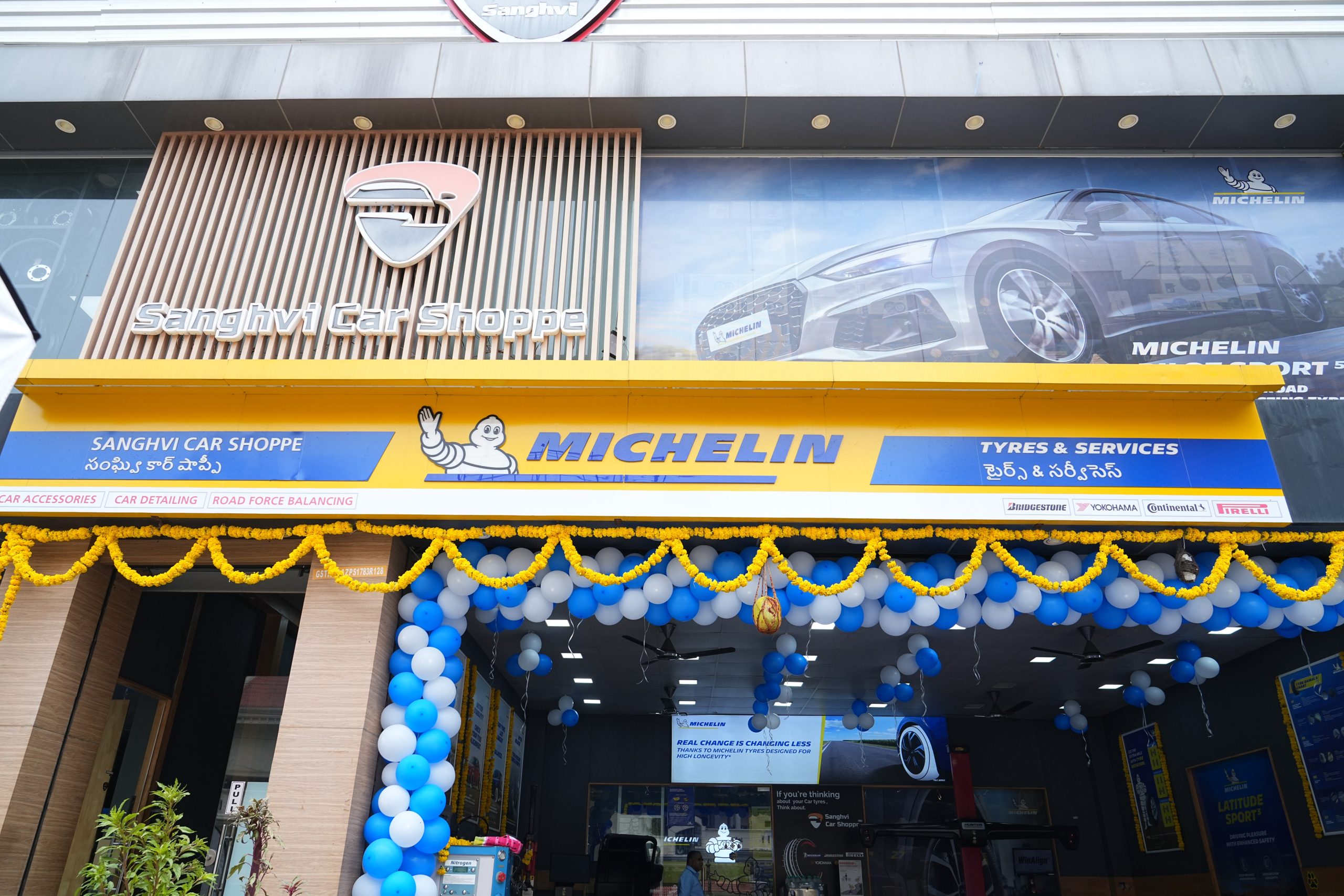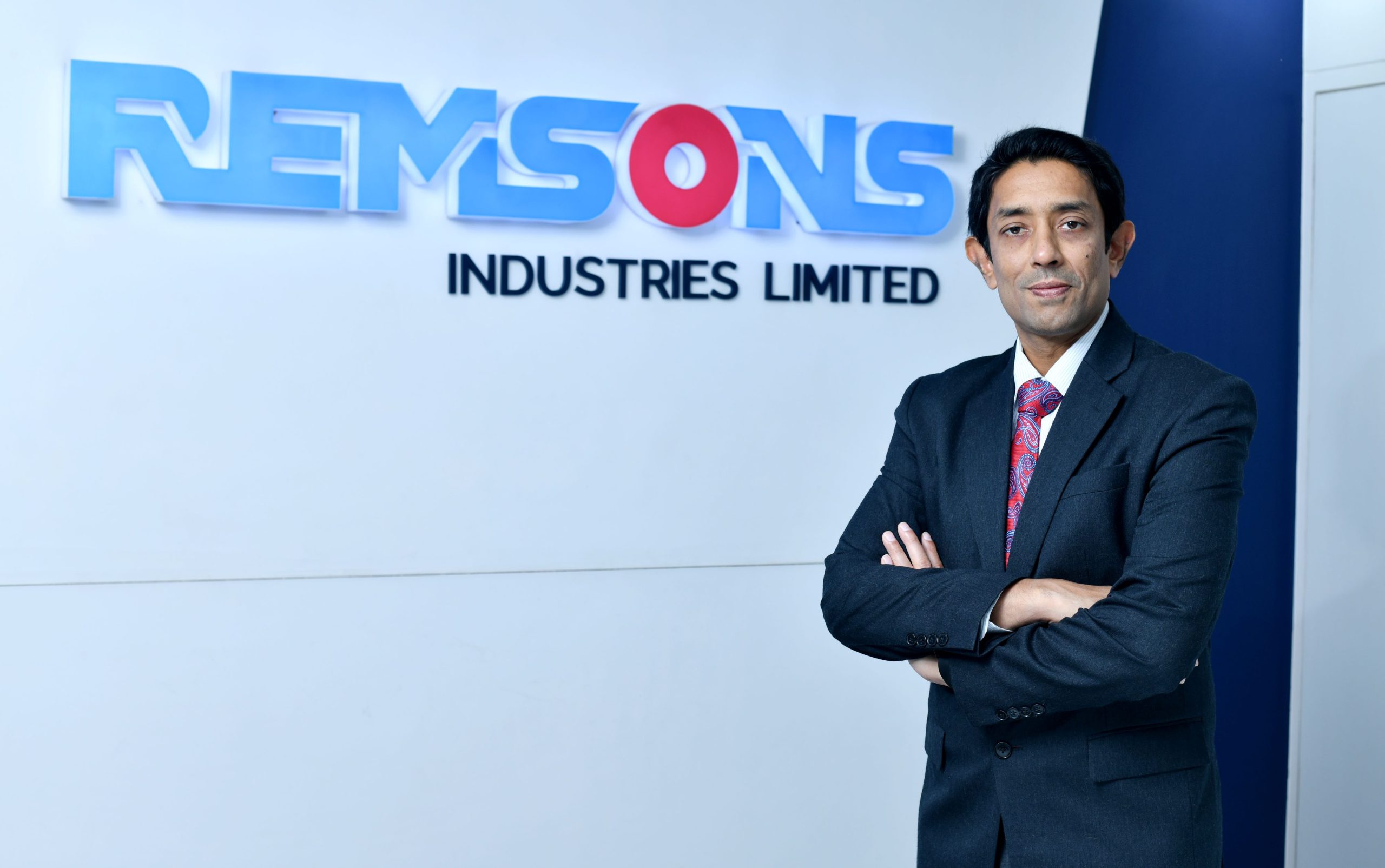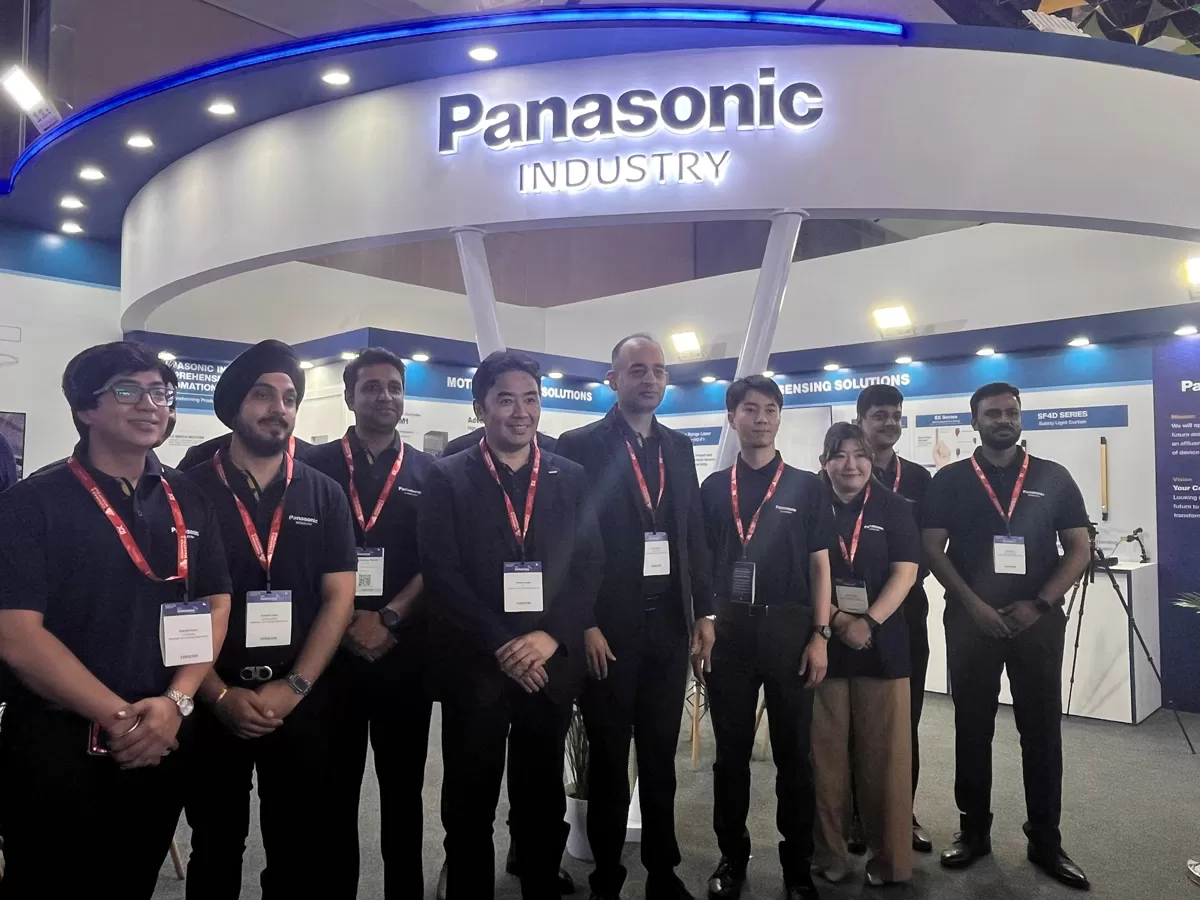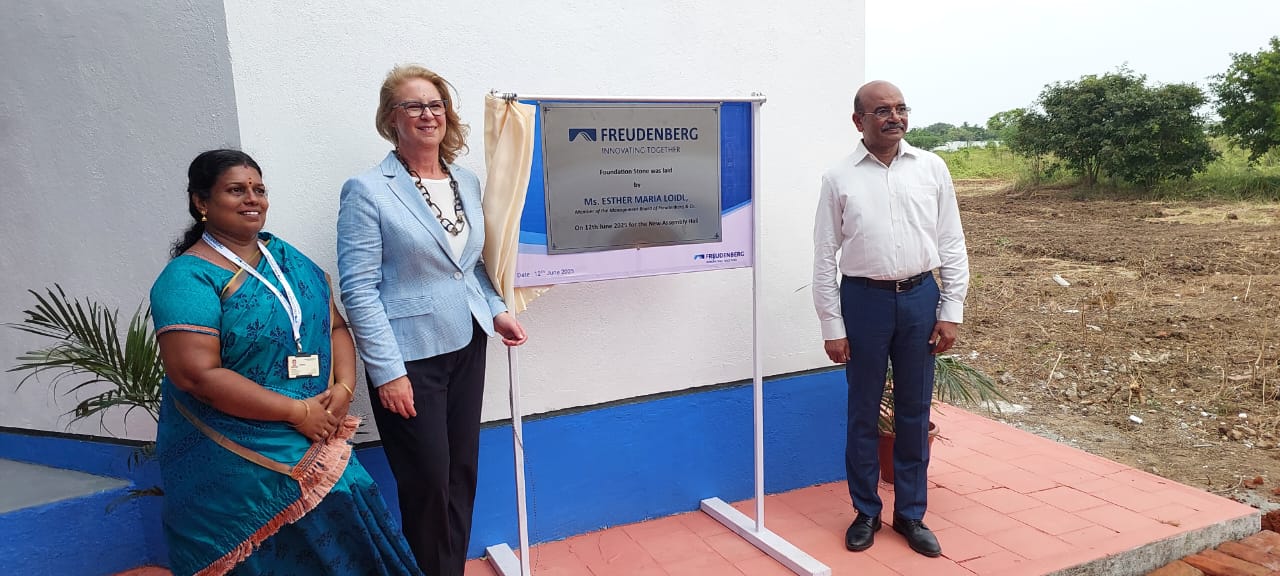After the success of Impact Design Language, Tata Motors have decided to introduce its next version, Impact 2.0. The passenger vehicles designed under its aegis will have their interiors influenced by Indian architecture. “Looking ahead, we are slated to launch two new platforms at the start of 2019. The first is the advanced modular platform (AMP), which will act as the base for our newest set of hatchbacks and sedans. Two innovative architectures – the ‘Optimal Modular Efficient Global Advanced’ (OMEGA-ARC) and ‘Agile Light Flexible Advanced’ (ALFA-ARC) which will be used in the making of H5X and 45X,” said Pratap Bose, Head of Design, Tata Motors in an interaction with Bhargav TS of Auto Components India. Edited Excerpts:
Q: Tell us about the design evolution at Tata Motors, and how is the company preparing for the future challenges?
Bose: We are preparing for a very interesting phase. Earlier we were talking about Impact Design the first wave. The outcome are the Tiago, Tigor, Hexa and Nexon. They received very good response from the market. Our market share as a company has outgrown the industry. In the last quarter we were the only company that grew in the competitive passenger car business. It is because the design and the products are resonating with the customers. We have done a lot of job in sales, customer service and support. We are number 2 in the customer support index survey. So I see a lot of positive signs. Now, we are moving to the next phase of Impact Design, which is called ‘Impact 2.0’ in which our new Harrier is designed under the OMEGA platform and it will be followed by our first product on our ALFA platform.
These platforms give us more flexibility to come up with products faster and in different types, sizes and segments. Today we do not cover the entire passenger car segment. We cover about 70-75% and our aim is to cover every segment that exists today and also create some new segments. This is very interesting. Since the first wave of design was so much liked and appreciated the second generation Impact 2.0 is going to be spectacular. You have seen a bit in H5X and 45X. But H5X will be a reality very soon and 45X will come later.
Q: How different will be the Impact 2.0 from the existing concept?
Bose: The philosophy will remain the same that is to create an immediate impact through the exterior and a lasting impact through interior design. The 2 platforms that are coming, ALFA and OMEGA, are global in every aspect. Be it powertrain, safety, crash and they also have a certain proportion, where we have put a certain range of wheel sizes. The design team was involved in establishing the actual architecture of these 2. That is a rare thing which you do not get in a career. We have had the opportunity to lay the foundation for the next 2-3 generations of Tata Motors products.
Q: Will the ALFA and OMEGA platform have all the product segments?
Bose: I cannot tell you what the order of introduction is going to be. What is important is ALFA goes from 3.8 to 4.4 meters. OMEGA goes from 4.4 m to 5 m. That is the JLR platform, but we have made some very significant changes for ourselves and our conditions. The expectation from a customer in India is very different from the one in Europe in terms of roominess, legroom, knee-room, shoulder-room etc. These are some of the important aspects that we have added into the architecture but the base is the JLR platform. ALFA is a range where a lot of cars can come in it. You can have everything within 4m, even beyond that. It is mainly because of the architecture is stable but flexible, we can bring new top hats much faster than before. So many systems and sub-systems are carried through the architecture. So when you change to suit a sedan, you do not dedicate them to re-engineer something. It will help in product development and keeping the product relevant. We have tried to project us as far us in safety, legislation both for pedestrians and the vehicle, offset, side impact and whatever we know today is going to come in the future. The architecture or platform is protecting that.
Q: Vehicle interiors have undergone several changes in the recent past. With so much more connectivity being built into our cars, how do you see this evolving?
Bose: I think connectivity is really the key word. Most people tell us when they are in the car journey they feel disconnected. So we look it as 2 things. One is, the occupants connecting to the car, and two, the car connecting to a larger eco system. Both are important. It will be through cloud. The car will be able to send diagnostic signals to the customer service, for example, and there are many dimensions to it. It is how easily you walk into the car with the smart phone connecting to the car and the car to the ecosystem.
Q: What kind of interior changes we are going to witness in the Impact 2.0?
Bose: HMI as system is getting a lot of attention from us because our customers are pushing. Today most people have phone that is bigger than a screen in the car. Electronics industry works faster than the automotive industry. So the architecture and the interior design, you will see when we launch the cars, are designed for bigger screen sizes. In future it will move from smaller to bigger screen even in affordable segments. How do you accommodate the changing screen size? What happens to the interface? How many buttons you are going to have? To address all these questions UI and UX are becoming critically important in the interior design.
Q: Do you think digital screen and touch panels will dominate the interiors in the future by eliminating the current plastic panels and mechanical switches?
Bose: Yes I agree, many switches will be reduced and I believe that some physical interface should still remain. For example, the volume or temperature button, we feel the physical knob is faster sometime. But having said that, today is the generation of digital natives who are around 12, 14 years. They are the customers after 7 years. They are using phones without buttons and the same thing they will expect in the cars as well. I think the time will come where the physical to digital will shift very quickly.
Q: So do you think the cars of tomorrow will also be very emotional?
Bose: I think cars today are already emotional. In social media, the car is an animate object, which is described in emotional words. Car is one of the few products that are described in human terms.
Q: Apart from Impact 2.0, what is the future direction of design at Tata Motors?
Bose: The 2.0 is the current picture for us. When new segments open up, we will watch for white spaces. We always propose different options to our senior management and we have a strong commitment from them towards the design. The 2.0 is the one that we are going to unleash very soon and we are very excited about that.
Q: What were the learning from the Impact Design and how you are implementing the learning in the 2.0?
Bose: Customers are becoming more and more aware of design in general. In any kind they look for the aesthetic appeal. Then comes the performance. Our Impact 1.0 got the people into the showroom and when they drove, it performed well. That is really important. Aesthetics alone will not save you. It has to be everything together as one complete team. Sales, after-sales, customer care, performance, and fuel economy are important. But we have seen that definitely it is the design that draws people to the brand and then the brand has to deliver its promises. These 2 have to happen. There are a lot of choices now and what differentiates one car from another is the design.
Q: You said attracting customers to walk into the showroom is the key. Apart from products, are you also looking at any concept for designing your showrooms uniquely?
Bose: Absolutely yes. In the last 3 years, the design team has been designing our pavilion at the Geneva Motor Show. The New Delhi Auto Expo 2018 pavilion was designed by them. Going forward we are going to put a lot of efforts in brand centre and showrooms. The design philosophy should run in everything that the company does. So we work closely with the sales and marketing teams and see how we can enhance the experience as well.
Q: What specific challenges do you see in designing electric and hybrid vehicles?
Bose: There is no real technical challenge in my view. The challenges are battery cost that is high and charging infrastructure that we do not have enough. An electric car born on the electric architecture gives you a lot of freedom on the interior. We get more engineering space. We will have a nice flat floor and more. It can free up a lot of constraints.
Q: So far the Indian companies have been importing designs from the international design centres. Now we see a huge shift, especially when Tata Motors came up with a striking Impact Design philosophy. Now, how global companies are looking at you?
Bose: When I started this job in 2011 as Head of Design, I had 1 or 2 very simple things that I wanted to achieve. One of them was that we should become a design benchmark for other companies. Usually we put the pictures of cars from other companies on our walls and see what they have done. My aim and vision was that in a few years the global companies should put our car pictures on their studio walls to study and understand what we have done. This has started already and a lot of people from other companies are looking at our design in a very different way. It is phenomenal. The kind of interest that we see from car designers has been rewarding for us.
Q: How design is going to help achieve new emission standards?
Bose: There are a few aspects to it, one is the weight of the car, so we are always looking for lighter solutions, easy to recycle. Another is the overall environmental impact. Electric is one way, using materials of certain type is another, the weight of every component that we put in a car, we study carefully. All these aspects go into it. We are also looking at safety legislation, BNCAP which is a great initiative. Nexon is the safest SUV in the market and we are very much proud to achieve 5 star in the recent test.
Q: Lightweighting is a key area in the minds of designers today. Could you talk about the use of materials that help make vehicles more efficient and safe?
Bose: Many car companies have moved to aluminium. In many cases, we have moved to high strength steel, which mean we can use thinner gauge of steel for the same components and that can give us huge weight savings. We look at the interior trims carefully especially the seats. Now most of the sub systems has become complex. I look at very carefully the ratio of glass to metal and we also look at the small things. In regular plastics too there are good developments. With the help of plastics you also can do variable thickness.
Q: Some design philosophies are loud, some continue to be subtle. What in your view is a sustainable design approach?
Bose: You don’t always have to scream to be heard. If you look at some of the greatest global leaders around us are not shouting all the time. You can be strong but you do not need to have high volume. For our design it is always strength above aggression, and slightly more restrained but not boring. The line is fine. The kind of customer response we have shows that people are noticing our cars for right thing. They will not age on the road as our competitors because we have a few more classic treatment of things. We are happy with where we are and Impact 2.0 will take us to another level.
Q: Design obviously is influenced by a variety of factors. How are you preparing yourself to deal with the future challenges?
Bose: Without challenges you cannot have design. We look at these challenges and convert them to opportunities. When the first safety regulatory came in everybody said it would change the car for ever. But it did not happen. Designers always find ways within constraints and when more constrained people will become more creative. For us challenges become opportunities to build something new. There is always space to create our own design language.
Q: How does the new design philosophy impact the commercial vehicle customers?
Bose: In CV many things are happening. There the consideration is different like total cost of ownership and economy of operations. Another case in commercial vehicle is that the person who buys the truck does not mostly drive it. We have a different set of consideration. In the small CV segment, there is a little bit of aspiration coming in. We showed something called Intra, the stylish mini-truck, in Delhi, that really struck a chord with many people who drive our Ace family, because it gave them a different feeling. It has the dual tone interiors and body-coloured aircon vents. These are things that have not happened in CVs before. Larger segments find extremely hard to attract drivers and there is a driver shortage in India. Therefore, when you have a truck that does not take care of the driver needs you will not get drivers. It is also coming in there.











Leave a Reply